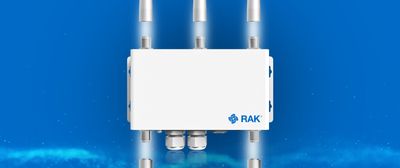Is a High-Gain Antenna Advantageous? A Comprehensive Guide
Choosing the right antenna for your needs can be challenging, especially when manufacturers often market “high-gain antennas” as superior and more expensive than their lower-gain counterparts. But is a high-gain antenna always the best choice? The answer is that it depends.
In this blog, we'll explore when low, medium, and high-gain antennas are advantageous and what factors to consider beyond dBi when selecting an antenna.
Understanding Antenna Gain
Antenna gain, measured in decibels relative to an isotropic radiator (dBi), indicates the directionality of the antenna's signal. Higher-gain antennas focus the signal in a narrower direction, while lower-gain antennas distribute the signal more broadly. Let's break down the scenarios where different gain levels are beneficial.
Low Gain Antennas (0-3 dBi)
Scenario:
- Uncertain Signal Direction: If you don’t know where the desired signal will be coming from, a low gain antenna is ideal.
Advantages:
- Broad Radiation Pattern: Low-gain antennas have a wide coverage area, making them less likely to be blocked by obstacles such as buildings and hills.
- Rugged and Urban Environments: Perfect for dense urban settings or rugged terrains where many obstacles could block a more directional signal.
Example:
- Urban IoT Deployments: In a city with tall buildings and varying topography, a low gain antenna ensures better overall coverage despite obstructions.
Medium Gain Antennas (3-6 dBi)
Scenario:
- Moderate Obstructions: Suitable when there are some obstructions, and you need a balance between range and coverage.
Advantages:
- Balanced Radiation Pattern: Medium gain antennas provide a more rounded and broader pattern, which helps in overcoming moderate obstructions.
- Suburban Areas: These antennas work well around obstacles and can connect with hotspots that are both vertically and horizontally near you.
Example:
- Suburban IoT Deployments: In suburban areas with a mix of open spaces and buildings, medium gain antennas offer a good compromise between range and coverage.
High Gain Antennas (6 dBi and above)
Scenario:
- Known Signal Direction: A high-gain antenna is the best choice if you know exactly where your desired signal comes from.
Advantages:
- Narrow Radiation Pattern: High gain antennas focus the signal in a specific direction, ideal for long-distance communication in flat terrains with few obstacles.
- High Locations: Effective when mounted high to avoid signal overshooting and to maintain a clear line of sight.
Example:
- Rural IoT Deployments: High-gain antennas provide extended range and clear signal focus in flat rural areas with minimal obstructions.
Beyond dBi: Other Considerations for Selecting a Good Antenna
While dBi is an important factor, there are several other aspects to consider when selecting the best antenna for your application:
- Frequency Range: Ensure the antenna operates within the frequency range required by your system (e.g. 860-930 MHz, 902-928 MHz).
- Environmental Conditions: Consider the IP rating for resistance to dust and water. IP65 and IP67 ratings are common for outdoor antennas.
- Mounting Height: The height at which the antenna is mounted can significantly impact coverage. Higher mounting points generally provide better line-of-sight but may overshoot nearby targets.
- Interference: Identify potential sources of interference, such as buildings, trees, or electronic devices, and choose an antenna that can mitigate these challenges.
- Connector Types: Ensure compatibility with your equipment. Common connector types include SMA and N-type connectors.
Conclusion
Selecting the right antenna involves more than just choosing a high-gain option. By understanding the specific needs of your application and considering factors such as frequency range, environmental conditions, mounting height, and potential interference, you can make an informed decision that ensures optimal performance and coverage.
For more detailed guidance and to explore our range of antennas, visit the RAKwireless Store. If you have specific requirements or need technical support, feel free to reach out to us. Stay updated with more technical insights and industry updates by subscribing to our blog.





